Review of the best according to the editorial board. On the selection criteria. This material is subjective, does not constitute advertising and does not serve as a purchase guide. Before buying, you need to consult with a specialist.
Ivan Aivazovsky is a famous Russian artist of the 19th century, one of the most famous marine painters in the entire history of painting. Throughout his long life, he painted about six thousand paintings, of which more than four thousand were devoted to the marine theme. From the very childhood of Aivazovsky, which took place in the port city of Feodosia, the sea for him served as a source of inexhaustible inspiration. The artist's works were very popular during his lifetime, and his name was widely known not only in the Russian Empire, but also in many European countries and the Middle East. It is curious that when creating his paintings, Aivazovsky rarely painted from life, preferring to display his own vision of seascapes on canvases. Some of his masterpieces can be seen in the Russian Museum, the Tretyakov Gallery, but most of them are in the Aivazovsky Gallery in Feodosia. Anyone who is even slightly interested in the visual arts should include the work of this artist in their horizons. In this collection, we will tell you about 15 of the most famous paintings by the outstanding master.
The most famous paintings by Aivazovsky
| Nomination | a place | name | rating |
| The most famous paintings by Aivazovsky | 1 | Wave | 5.0 |
| 2 | Chaos | 4.9 | |
| 3 | Black Sea | 4.8 | |
| 4 | Among the waves | 4.7 | |
| 5 | Storm at sea at night | 4.6 | |
| 6 | Sea. Koktebel | 4.5 | |
| 7 | Rainbow | 4.4 | |
| 8 | Moonlit night in Capri | 4.3 | |
| 9 | Naval battle at Navarino | 4.2 | |
| 10 | Sinking ship | 4.1 | |
| 11 | Gulf of Naples | 4.0 | |
| 12 | Chesme battle | 4.0 | |
| 13 | Brig “Mercury” attacked by two Turkish ships | 4.0 | |
| 14 | View of Constantinople and the Bosphorus | 4.0 | |
| 15 | Ninth wave | 4.0 |
Wave
Rating: 5.0
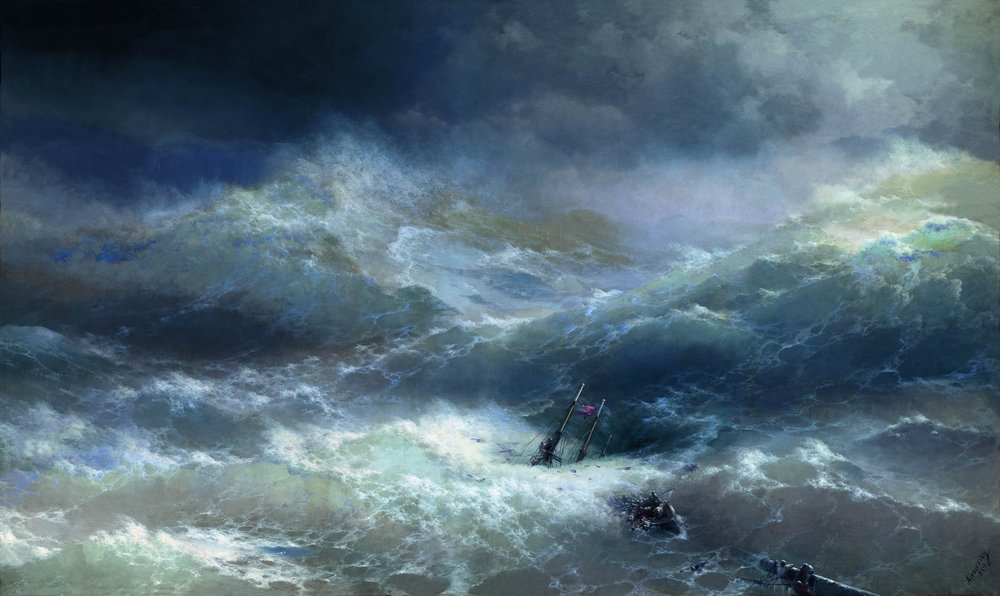
Aivazovsky's canvas “The Wave” depicts a stormy sea on a winter day, most of all the oncoming wave catches the eye on it, which is about to swallow a sinking ship and a fragile boat filled to capacity with sailors trying to escape. The picture is imbued with a sense of the incredible power of marine nature and the fatal helplessness of a handful of people in the face of the raging elements. The people depicted in the foreground give it a special drama, clinging to the ghostly hope with the last bit of strength in the form of a fragment of a mast that has not yet gone under water.
The picture is distinguished by a rather narrow range of shades, its expressiveness is achieved mainly due to small details, such as thick foam and reflections of lightning on the billowing crests of waves. The hidden horizon line and the menacing leaden clouds hanging low over the water perfectly convey the effect of imminent disaster.
Chaos
Rating: 4.9
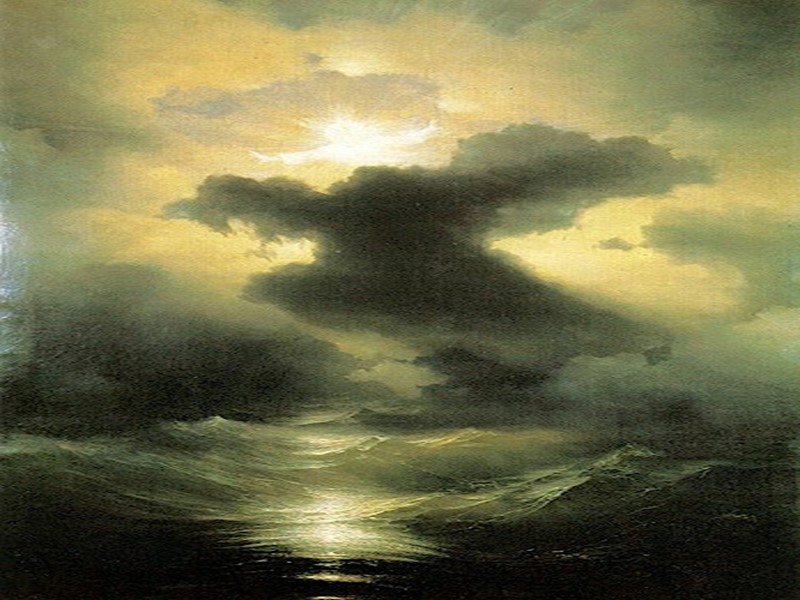
“Chaos” is considered the most famous creation of Aivazovsky on religious themes. During that period, the artist lived in Italy and improved his skills with Venetian seascapes. The rumor about this picture quickly reached the Vatican and Pope Gregory XVI himself became interested in it. For writing the canvas “Chaos” the Russian painter received an award in the form of a gold medal from the pontiff, and then he expressed his willingness to buy the painting. However, Aivazovsky refused to pay and simply donated the canvas to the Vatican Museum.
Obviously, the artist took the biblical legend about the creation of the world as a basis for the plot, according to which “the Earth was formless and empty … and the Spirit of God was hovering over the water.” Chaos is depicted in the form of recalcitrant and wavering sea waves and thunderclouds, one of which took the form of a mysterious dark figure. And above, above them – a bright silhouette of God with outstretched arms, the light emanating from him is reflected in dark waves. Spiritual symbolism, as well as a dark green color palette, leave the viewer with a sense of the inner strength and magnetic attraction of the picture.
Black Sea
Rating: 4.8
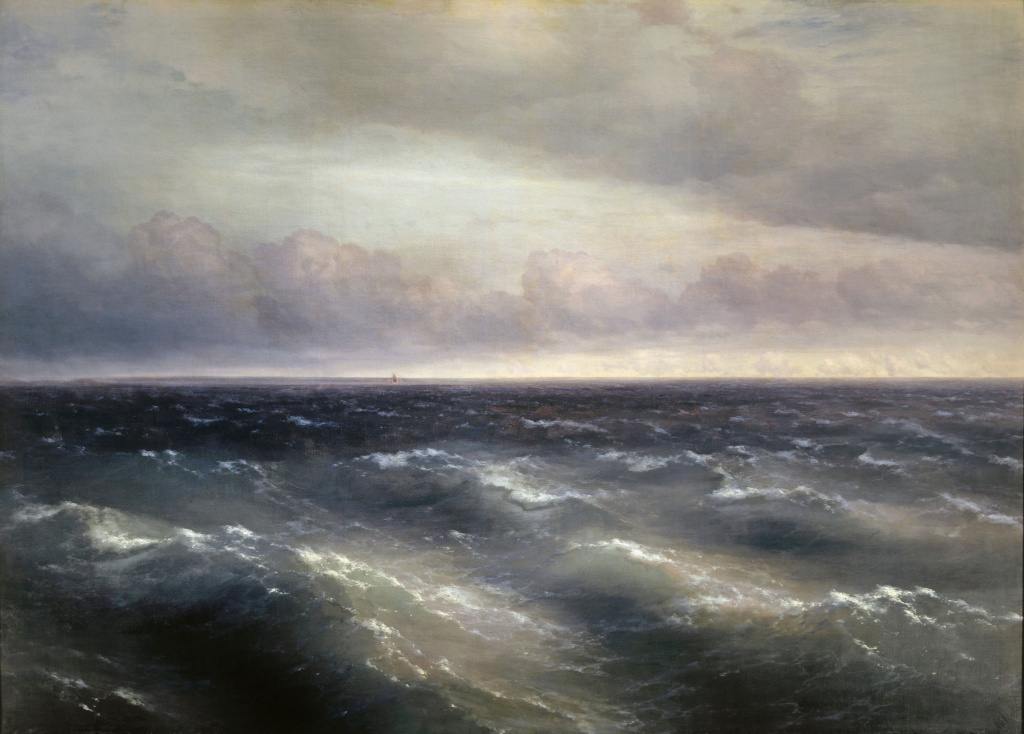
Despite its simple composition and restrained color scheme, many art critics consider the “Black Sea” a grandiose painting. It depicts only the sea and the sky, but thanks to the artist's skill, his ability to use halftones, they appear realistic, lively and boundless. A narrow strip of the horizon divides the canvas into two parts: a gloomy sky with incoming clouds and gray crests of waves growing towards the viewer. Aivazovsky managed to accurately convey that tense moment when a fierce storm is about to break out on the sea from minute to minute.
The picture faithfully conveys the real character of the Black Sea, unpredictable and rather dangerous for shipping. As a hint, there is a barely visible silhouette of a sailing ship in the distance. The water around it is still calm and smooth, but it is not known whether the boat will have time to reach the saving land line visible on the horizon or whether it will be swallowed up by the rapidly approaching element. As in many other works of Aivazovsky, oppressive uncertainty reigns here.
Among the waves
Rating: 4.7

The picture is minimalist, even in the context of the rest of Aivazovsky's work. However, it was thanks to this that the artist managed to depict beauty with such amazing accuracy and convey the mobility of sea waves. Color gamut ranges from light silvery blues in the foreground to rich deep blues in the farthest parts of the landscape. Particular attention is drawn to a wave pierced obliquely by a ray of light, sparkling with snow-white thick foam on the crest.
Aivazovsky wrote his work “Among the Waves” at the age of eighty-one, spending only ten days at work. It is curious that initially on the canvas, in addition to water spaces, a small boat with people was captured. But when the artist demonstrated the work to his loved ones, one of his relatives, being a ship engineer, expressed doubt that such a ship could hold out at high waves even for a short time. An angry Aivazovsky, without saying a word, went into his room, and the next day presented a reworked picture, in which not a trace remained of the boat.
Storm at sea at night
Rating: 4.6

The painting “Storm at Sea at Night” is a vivid example of romanticism and emotional painting characteristic of Aivazovsky's work. Although the picture reflects the stormy temperament of the sea, it does not leave a gloomy impression. One of the main elements of the composition is the moon, the light of which falls on the waves, painting them in golden hues. The lunar path, reflected in the water, makes it almost transparent, and highlights the foamy tops from the darkness.
The ship can also be considered an important part of the plot. Most of it remains in the form of a dark silhouette, which made it possible to visually emphasize the deployed sails. Obviously, despite the storm, the ship stays afloat and the waves rolling along the deck will not prevent it from going further on the intended course. The picture is dynamic, and carries a charge of optimism inherent in many of the author's creations.
Sea. Koktebel
Rating: 4.5
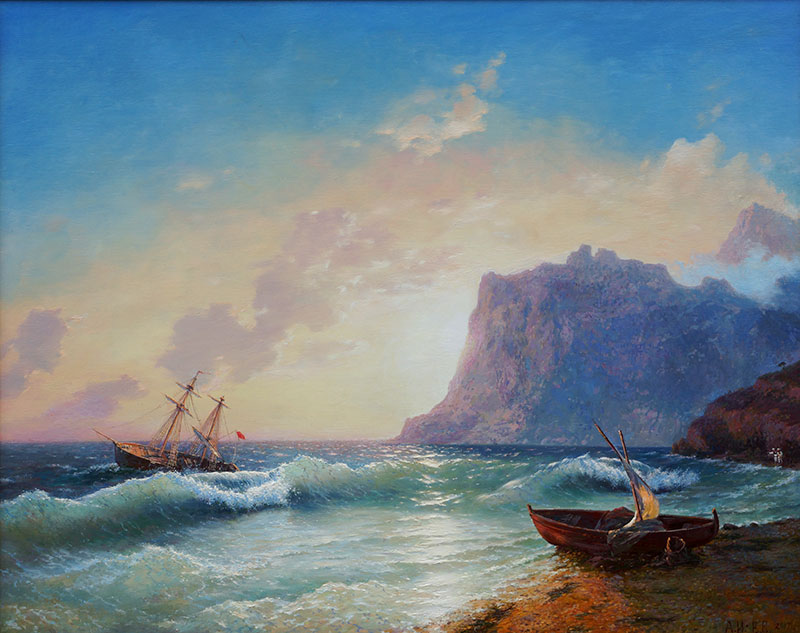
The painting “Sea. Koktebel”, also called “Koktebel Bay”, depicts the coast of Feodosia. This is one of the brightest and warmest works by Aivazovsky, in which he managed to vividly and naturally convey the restless beauty of the Black Sea. In the background, on the right side of the canvas, the Kara-Dag rock rises, which almost completely obscures the setting sun. A small ship on the waves with a red pennant waving behind the stern and a boat lying quietly on the shore contrasting with it enhance the romanticism of the artist's work.
Most of the canvas space is occupied by the evening sky, painted with orange and pearl shades. Also, Aivazovsky paid much attention to the approaching sea on the coast, thanks to the skillful glaze, its waves seem transparent, almost real.
Rainbow
Rating: 4.4
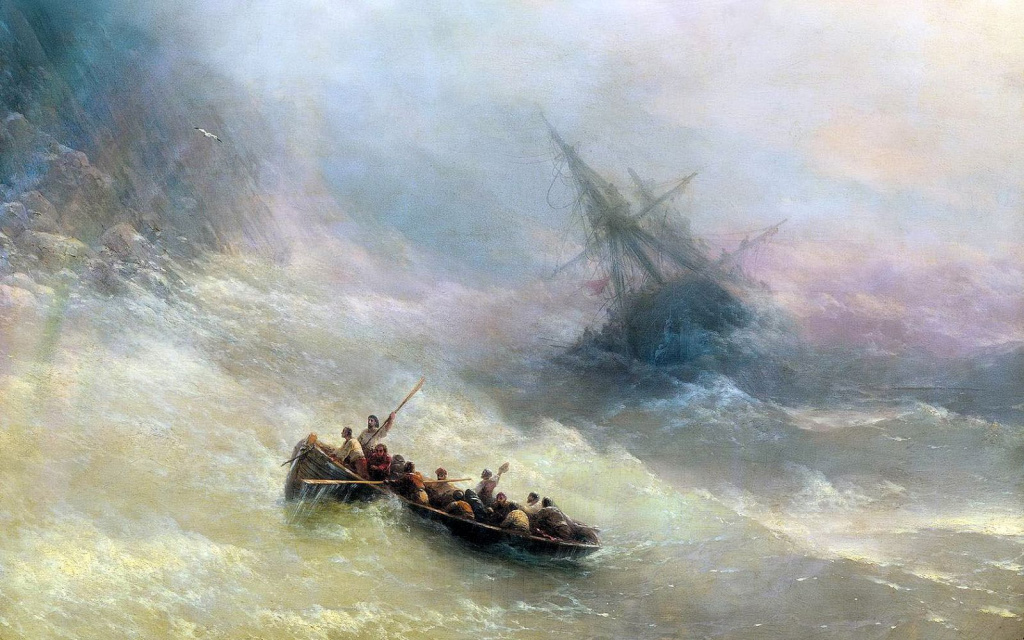
While working on the painting “Rainbow”, the Russian seascape painter deviated somewhat from his usual romanticism, preferring classical realism in depicting the struggle of a person with the elements. In the center of the plot is a raging storm that led to a shipwreck. The vessel, apparently landing on the reefs, has dangerously heeled and will sink to the bottom from minute to minute. And in the foreground, sailors fighting the waves trying to swim to the shore. At first glance, it seems that they will not succeed, and powerful waves will swallow the boat with people. However, the rainbow that appeared in front of them is a symbol of salvation and the rapid retreat of the storm.
The painting does not contain the bright colors typical for the author, instead, he masterfully conveys the mood of the plot with soft shades of blue, purple and green. The background is depicted much darker than the foreground and the whole picture seems to be visible through a thin fog of sea spray. This gives a sense of depth and reality of what is happening, the artist seems to transport the viewer to the very epicenter of events.
Moonlit night in Capri
Rating: 4.3

On this canvas, belonging to his early creative period, Aivazovsky captured a night landscape near the island of Capri. The island is located in the Italian region of Campania and since the time of the Roman emperors has been the most popular resort in the Tyrrhenian Sea. Most of the composition is devoted to the sky and water, but there are also several ships in the painting. A rather large two-masted ship with raised sails is heading towards the island, and small boats are probably out for night fishing.
The color scheme of the canvas mainly consists of shades of blue and cold yellow colors. Despite such a modest palette, the artist easily conveyed the atmosphere of the nighttime Italian coast. The blurred path of moonlight, falling on the central part of the picture, gives it volume and perspective. This visual impression is complemented by weightless clouds, traced with neat light strokes.
Naval battle at Navarino
Rating: 4.2
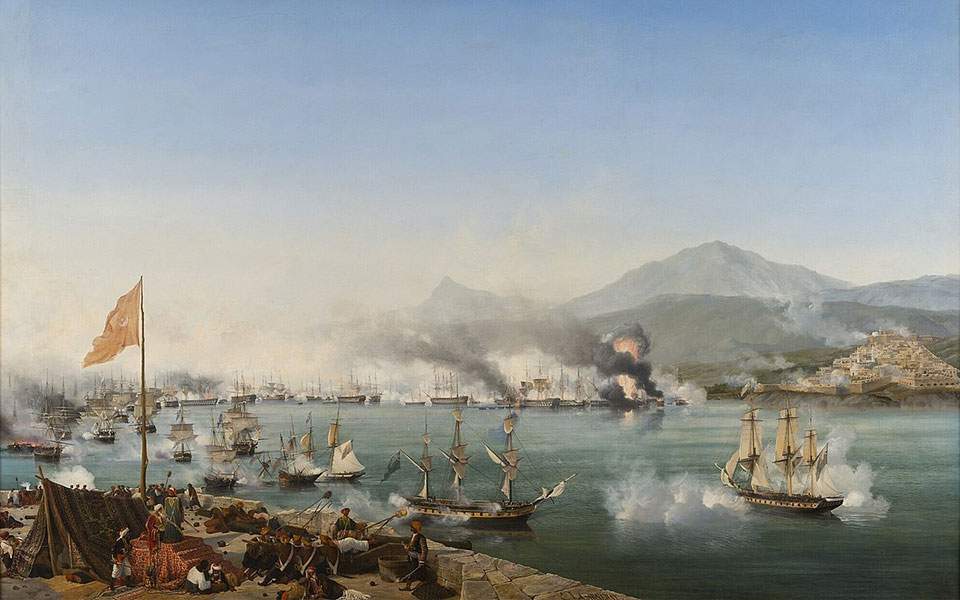
The plot of this painting is based on a historical event that took place in October 1827. It depicts a naval battle in the Navarre Bay of the Ionian Sea, when the ships of the Russian, English and French navies won the battle against Turkish ships. The outcome of this battle significantly weakened the naval forces of Turkey, which subsequently accelerated the development of the Greek liberation movement and led to the autonomy of Greece. The central figure of the composition is the famous Russian flagship “Azov”, which played a key role in the defeat of the Turks.
Before the creation of the canvas, Aivazovsky had the opportunity not only to visit the place where the battle took place, but also to talk with the participants and eyewitnesses of those events. This allowed the artist to vividly and vividly embody the cruelty and at the same time the attractive energy of the sea battle scene in the picture.
Sinking ship
Rating: 4.1
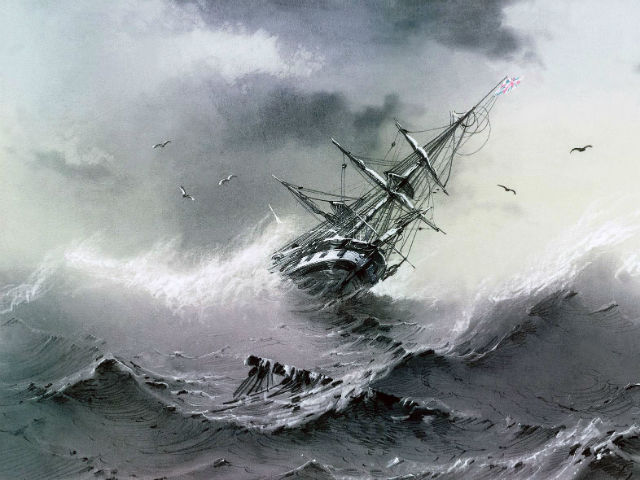
The painting “The Sinking Ship” is one of the most dramatic works of the author, in addition, in it his talent for graphic works of art was most fully revealed. Graphite and colored pencils were used as tools. The nearly monochrome image highlights a banked ship in distress. Large waves rise around him, threatening at any moment to overturn him onto the reefs, which most likely has already happened to the ship, the remains of which are visible from under the water in the foreground.
Aivazovsky, this time without his usual color accents and bright colors, masterfully conveyed the emotional component of the picture thanks to a particularly careful study of details. The only colored element on the canvas is the flag waving at the top of the sailing ship's mast.
Gulf of Naples
Rating: 4.0
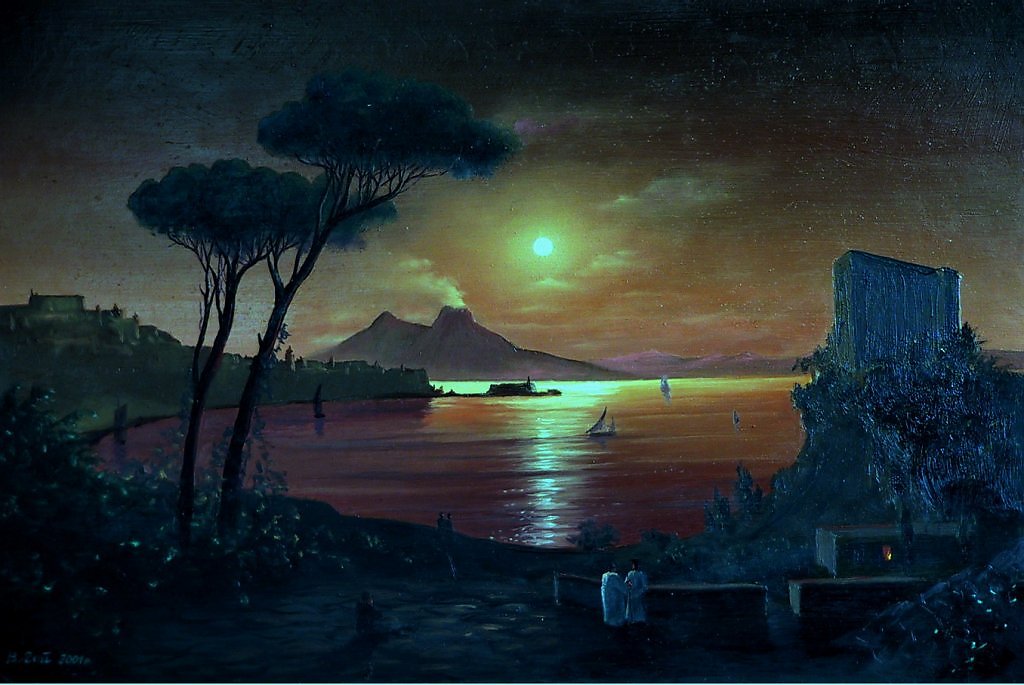
This canvas was painted by the artist during his trip to Italy. After the picture was presented to the general public, it was repeatedly written about in the press, and a number of famous people in Europe expressed a desire to get acquainted with the work of the Russian painter.
The main focus of the work is on the reflection of the moon in the waters of the bay, which brightens up the overall dark range of the landscape. On the left side is a sleeping Naples, closer to the center are the peaks of Vesuvius, the only active volcano in mainland Europe. Being a seascape painter, Aivazovsky, nevertheless, perfectly traced the texture of the land: sand, grass and stones make a good contrast with the smooth surface of the Tyrrhenian Sea. On the right is the Carthusian monastery of Certosa di San Martino, which is also indicated by the figures of monks in white robes. Like many of Aivazovsky's other creations, the painting is filled with a sense of fresh air and moisture.
Chesme battle
Rating: 4.0

The Battle of Chesme is the most important battle in the history of the Russian-Turkish war; it took place in June 1770 and ended with the complete victory of the Russian fleet. The artist captured the decisive moment in the painting when the Turkish fleet was finally defeated. The central figure is the battleship, the flagship of the Three Hierarchs, and the lights of the fires and explosions of the Turkish ships serve as the background. Looking at the picture, one gets the impression that the artist himself was in the thick of these events.
The canvas is distinguished by attention to detail, and it is not surprising, because Aivazovsky had access to all ships of the Russian fleet and thoroughly knew the structure of the ships. On top of that, he was adept at creating the right atmosphere with the right choice of colors. The color scheme of the “Chesme battle” is generally quite dark, as smoke and fumes literally cover the sky, and this serves as an excellent contrast to the fiery glow that colors the water in red hues. The picture carries a mixed emotional charge: both the feeling of victory and heroism of the Russian sailors, and the feeling of chaos and destruction.
Brig “Mercury” attacked by two Turkish ships
Rating: 4.0
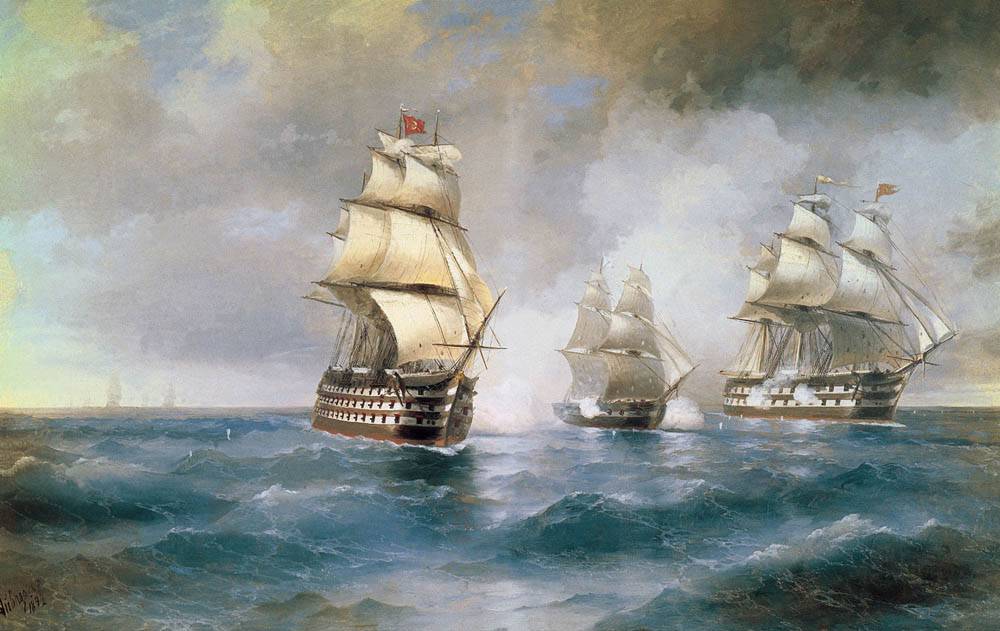
The battle of the Russian brig “Mercury” with two battleships of the Turkish fleet is still considered an outstanding event in naval history, an example of courage, skill and fortitude. This event happened off the coast of the Bosphorus in 1829. Due to the weak wind, the brig could not get away from the pursuit and he had to engage in battle, having only 18 guns on board, while the enemy had 200 guns. During the two-hour battle “Mercury” with cannon volleys damaged the masts of both ships, forcing them to leave the battlefield. What is noteworthy, although the brig received significant damage, only four people from the team died.
Aivazovsky, with his characteristic scope, depicted the height of the battle on the canvas. A light breeze, slightly increasing towards the viewer, conveys the tension of the moment, and the white smoke from the cannon shots seems almost real. The general impression is complemented by the storm clouds gathered in the sky.
View of Constantinople and the Bosphorus
Rating: 4.0
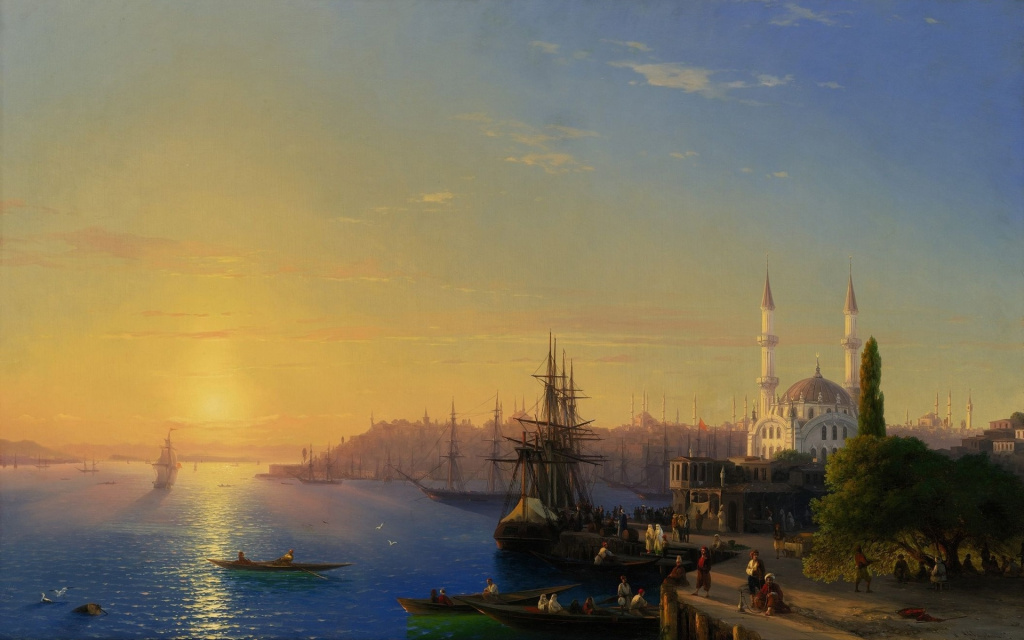
Aivazovsky first visited the capital of the Ottoman Empire in 1845, together with the Mediterranean Geographical Expedition as the official artist of the Admiralty. Both the city itself and the view of the Bosphorus made a huge impression on him, so the painter made several sketches. After returning home, Aivazovsky painted a large-scale canvas, on which he conveyed in detail the view of the bay and the Tophane Nusretiye mosque.
The painting embodies calmness and romanticism, it is filled with sunlight, the rays of which illuminate the calm sea surface. The artist's skill manifested itself here not only in the landscape, but also in the detailed drawing of buildings, ships and human figures. To date, this canvas is the most expensive of all that Aivazovsky created, in 2012 it was estimated at more than four million dollars.
Ninth wave
Rating: 4.0
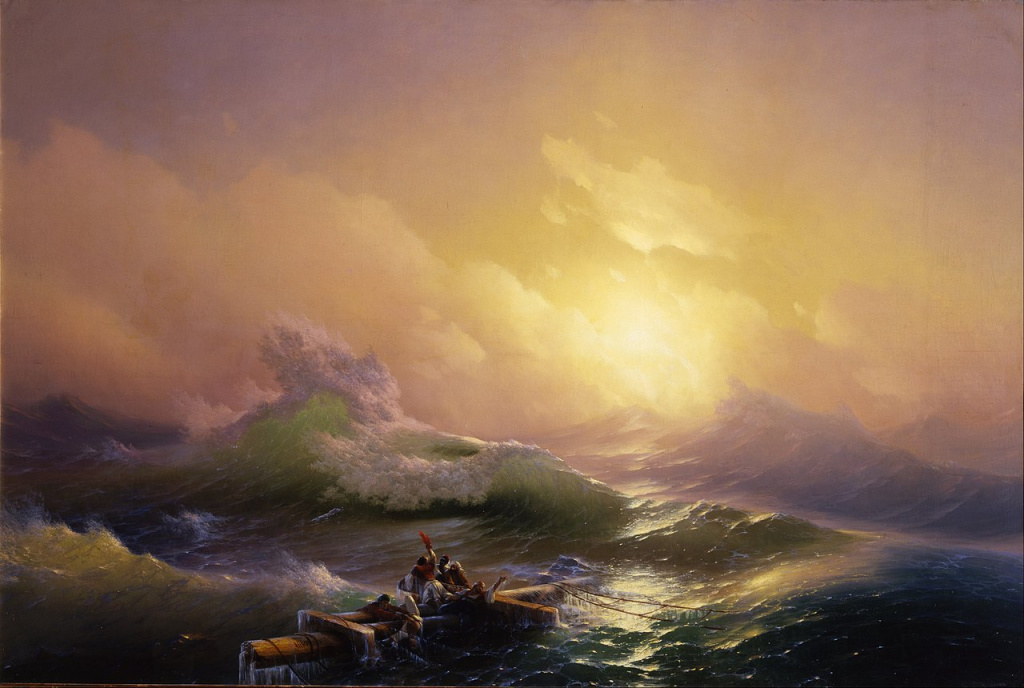
The painting “The Ninth Wave” is rightfully considered the pinnacle of Ivan Aivazovsky's talent, the embodiment of his love for the sea and his ability to convey the beauty of seascapes on canvas. This masterpiece was created in just eleven days and almost immediately became known throughout Russia, and soon beyond its borders. The painting was acquired by Emperor Nicholas I, a great connoisseur of Aivazovsky's work. The plot of the canvas depicts a stormy sea that has not yet calmed down after a night storm, sailors are in the foreground, they are holding onto a fragment of the mast. A little further behind them, a large wave is visible, a destructive ninth wave, which will obviously pass by without dragging them to the bottom.
Thanks to its bright and light colors, the picture makes an optimistic impression, leaving the viewer with the idea that the worst is over. The artist worked on the waves in the most detail: the skillful use of glazing made it possible to achieve high realism in the image of water. Also, the canvas is distinguished by smooth transitions of colors, due to which the sea and the sky are combined into a holistic harmonious composition.
Attention! This rating is subjective and does not constitute an advertisement and does not serve as a purchase guide. Before buying, you need to consult with a specialist.








